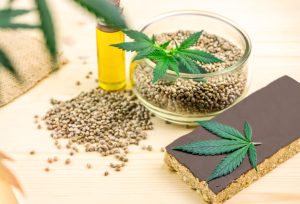The journey of quality cannabis begins long before it reaches Orange County Cannabis Co. In fact, successful cannabis cultivation combines science, art, and careful attention to detail. Understanding the intricacies of growing helps customers appreciate the effort behind each product. This guide provides insight into how high-quality cannabis is cultivated, covering factors from seed selection to sustainable growing practices.
1. Choosing the Right Seeds and Strains
- The foundation of cannabis cultivation starts with selecting the right seeds and strains. Cannabis growers consider genetics that cater to specific needs—whether for medicinal use, relaxation, or creativity. Indica, sativa, and hybrid strains each have unique growth cycles, potency levels, and desired effects, which influence the seeds chosen.
2. Indoor vs. Outdoor Cultivation
- While outdoor cultivation relies on natural sunlight, indoor growing allows for complete environmental control, which is crucial for consistency in quality. Indoor grows, common in areas with fluctuating weather like Orange County, NY, use specialized lighting, temperature controls, and ventilation to optimize plant growth at every stage.
- Indoor-grown cannabis offers benefits such as year-round cultivation and protection from pests. This level of control ensures that our cannabis products meet high standards for purity and potency.
3. Understanding Growth Stages
- Cannabis plants progress through several growth stages: germination, seedling, vegetative, and flowering. Each stage requires precise adjustments in light, water, nutrients, and care to ensure healthy plants.
- In the vegetative stage, for example, plants develop leaves and grow rapidly, requiring increased light and nutrients. During flowering, where buds form, light exposure shifts to simulate shorter daylight hours, triggering bud production.
4. Lighting, Temperature, and Humidity Control
- Light plays a central role in the cannabis growth cycle, especially for indoor operations. LED and HPS lights are commonly used to replicate the sun’s effects. These lights vary in intensity to mimic day and night cycles, helping to optimize bud production.
- Temperature and humidity also impact growth, with ideal conditions ranging from 70–85°F during the day and lower temperatures at night to simulate natural conditions. Humidity must be closely monitored, as too much moisture can lead to mold, while too little can dry out plants.
5. Nutrient and Soil Considerations
- Cannabis plants require a balanced diet of nitrogen, phosphorus, and potassium (N-P-K) throughout their life cycle, alongside trace minerals. Organic soil is a popular choice, enhancing the plant’s flavor profile and potency. Alternatively, hydroponic setups allow for more direct control of nutrient levels, although they require more monitoring.
- At Orange County Cannabis Co., our commitment to quality extends to the nutrients and soils used by our cultivators, ensuring optimal health and high cannabinoid content.
6. Pest and Disease Management
- Effective pest management is essential for healthy cannabis plants. Integrated pest management (IPM) is a strategy many growers use to prevent infestations by introducing beneficial insects, using organic pest repellents, and maintaining clean facilities.
- Disease control, especially for issues like root rot and powdery mildew, involves careful monitoring of moisture levels and implementing sanitary practices.
7. Sustainable Growing Practices
- As awareness of environmental impact grows, many cultivators prioritize sustainability. Practices such as water conservation, organic fertilizers, and energy-efficient lighting help reduce the ecological footprint of cannabis cultivation.
The cultivation process is a complex and highly regulated craft that demands precision and expertise. By prioritizing quality in every step, from seed to sale, Orange County Cannabis Co. ensures that our customers receive cannabis that’s not only potent and safe but also ethically grown. For a deeper look into the science behind cannabis cultivation, the ScienceDirect Cannabis Cultivation Guide offers additional details on the technical aspects of growing practices and plant care.





